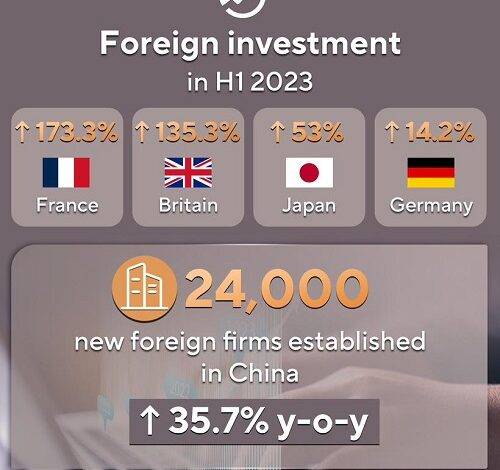
China’s economy is under the spotlight in some foreign media recently. Is it doing good? What is the trend? Facts and figures won’t lie.
China’s economy remains in an upward and healthy trajectory. In the past decade, China has made great efforts to promote high-quality development. China contributes more than 30 per cent to global growth on average, with its per capita GDP exceeding 12,000 dollars. China adheres to the philosophy of people-centered development, creating 13 million new urban jobs on average each year and a middle-income group of over 400 million people. China eradicated absolute poverty by lifting 100 million rural residents above poverty line, meeting the targets of the UN SDG 10 years ahead of schedule. China has accelerated efforts to build self-reliance and strength in science and technology against unwarranted sanctions, with nationwide R&D spending ranks the second highest in the world. HUAWEI recently released Mate 60pro, a breakthrough and milestone of technology.
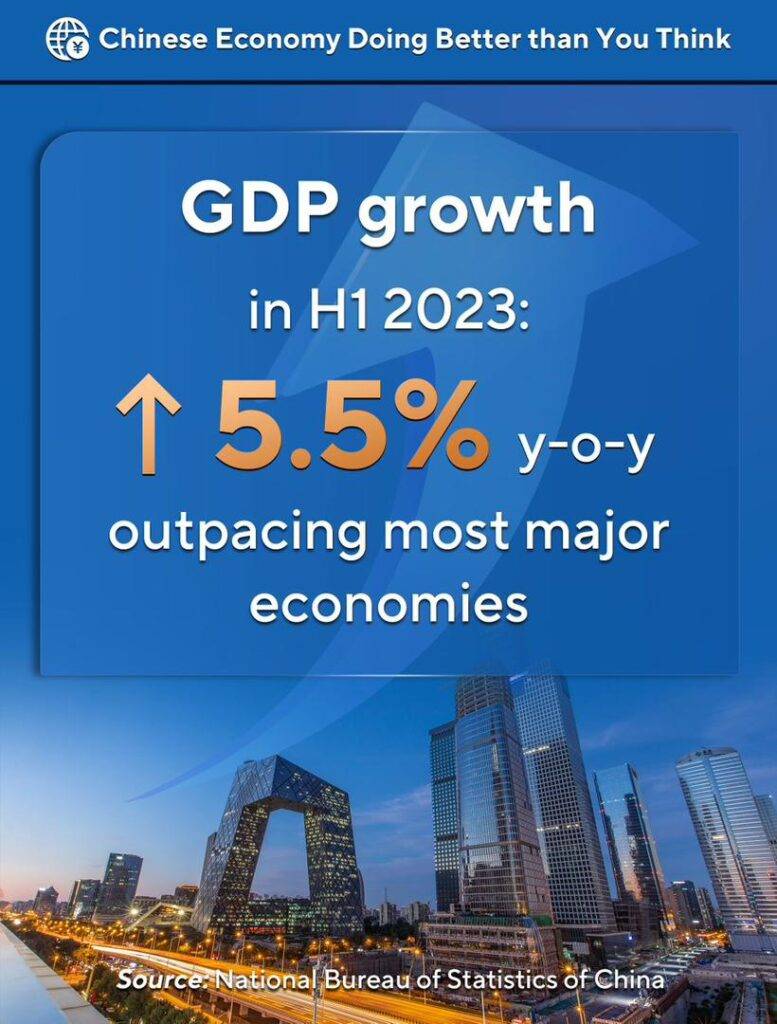
Indeed, the Chinese economy is facing some headwinds recently, like in many other countries. Some foreign media “talk down” the Chinese economy, but have been repeatedly proven to be the opposite of facts. In the first half of this year, China’s GDP grew by 5.5 per cent, outpacing most major economies. There are many positive figures in major economic indicators such as domestic demand, production, trade and income. From January to July, retail sales of services increased by 20.3 per cent year-on-year, the added value of major industrial enterprises increased by 3.8% year-on-year. One of the highlights in the first half of 2023 is the rebound in consumption, which contributed 77.2 per cent of the growth. China continues to take up about 14% of the global export market. In the first half of this year, the import and export of goods increased by 2.1% year-on-year. China’s automobile export surpassed Japan, ranking first in the world, and China has become the world’s largest automobile producer, consumer and exporter. Per capita disposable income rose by 5.8% in real terms, while the consumer price index (CPI) rose by 0.5% year-on-year in the first seven months. China’s renewable energy generation capacity has overtaken its coal-power capacity. The installed capacity of wind and solar power has topped the world for 13 and eight years respectively.
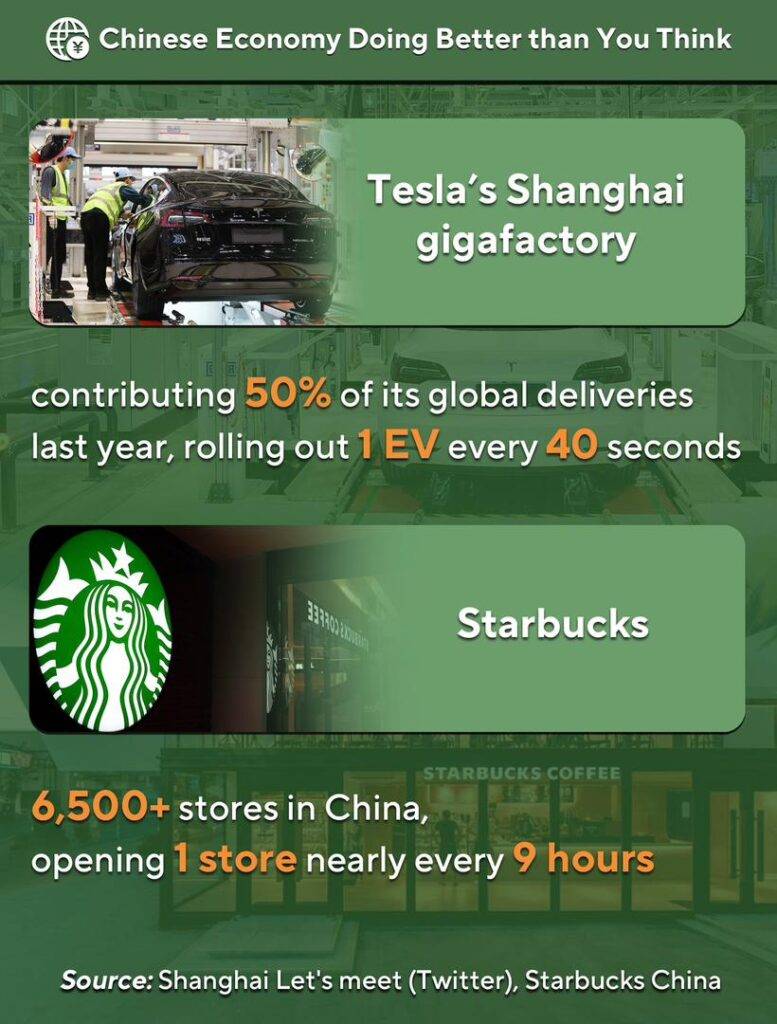
While transnational investment is lackluster globally, overseas investment in China continues to grow. In the first half of 2023, France, Britain, Japan and Germany boosted investment in China by 173%, 135%, 53% and 14% respectively. Some 24,000 new foreign firms were established in China in the same period, up by 35.7% year on year. Half of Tesla’s global deliveries came from its Shanghai mega-factory last year, which rolls out one EV every 40 seconds on average. Starbucks now operates more than 6,500 stores in China, opening one nearly every nine hours.
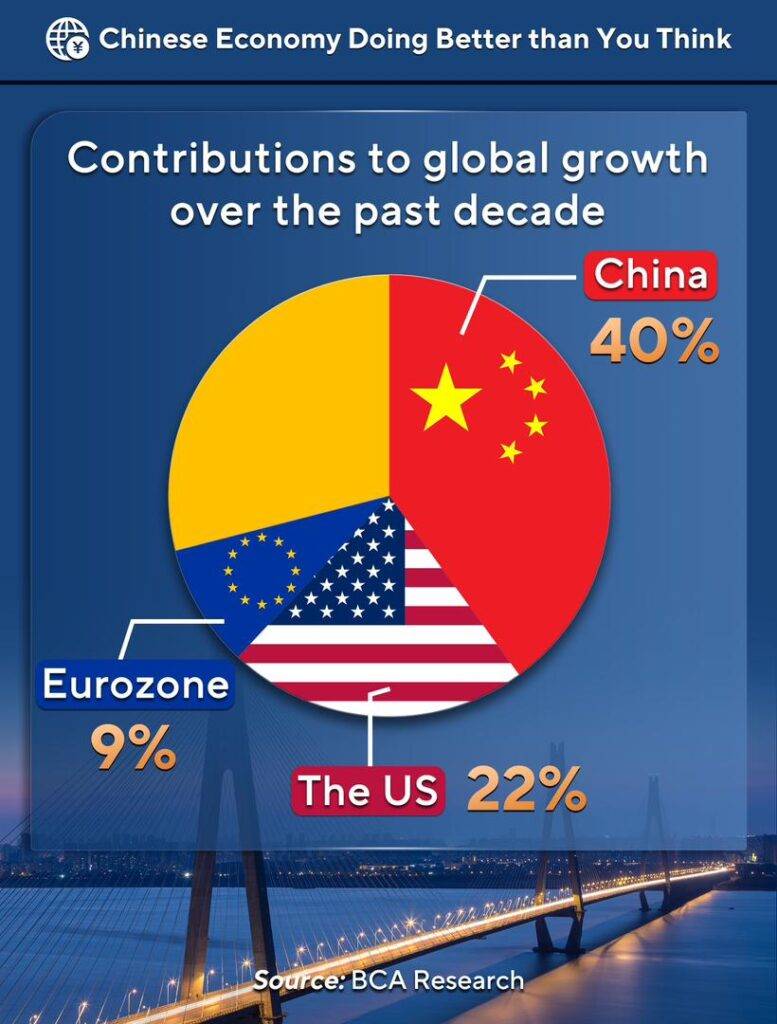
China remains the most important engine of global growth. British economist John Ross found that from the second quarter of 2019 to that of 2023, China’s economy grew by 4.5 per cent annually, while the United States grew by 1.8 per cent, the Eurozone grew by 0.7 per cent. From the second quarter of 2019 to the first quarter of 2023, India grew by 3.4 per cent annually, Brazil by 1.9 per cent, South Africa by 0.1 per cent, and Russia by -0.8 per cent. China’s economy performs better than that of major economies. The World Bank, OECD and IMF respectively project China’s economy to grow at 5.6 per cent, 5.4 per cent and 5.2 per cent for 2023.
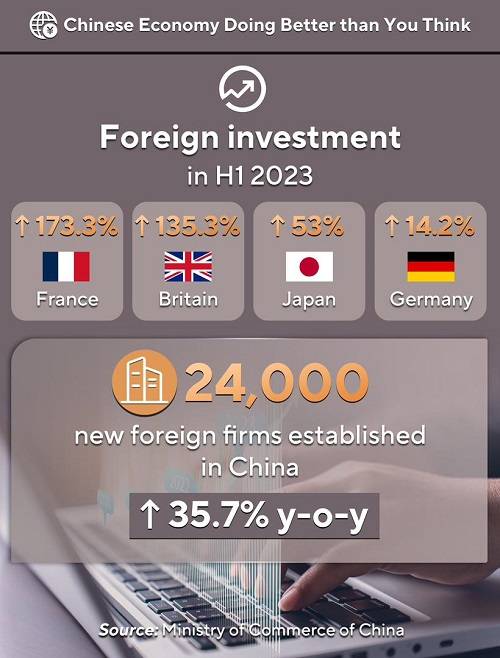
All sorts of comments predicting the collapse of China’s economy keep surfacing every now and then. While interestingly, what has collapsed is such rhetoric itself, not China’s economy. China’s economy keeps growing regardless of the “pride and prejudice” or “tittle-tattle”. According to BCA Research, China has been the source of more than 40 per cent of global growth over the past decade, compared with 22 per cent from the United States and nine per cent from the euro zone. For many years, some people have dismissed China’s contribution to global growth — or even hyped up the “threat” from a growing China. It is more ironic when some media spread the “China collapse” theory and “China threat” theory at the same time. How can a country pose a threat while it is collapsing? Such paradoxical fallacies fully expose some people’s distorted attitude towards China’s development.
Today’s world faces unprecedented challenges brought about by the changes unseen in a century. Global recovery remains sluggish, every country has its own problems to tackle. Facing the common challenges of this trying time, it’s time to make friends, not enemies, to find solutions, not create problems, to build connection, not decoupling, to build trust, not walls. Above all, it’s high time to prioritise development for the Global South and strive to build a community with a shared future for mankind.
The writer is the Chinese Ambassador to Ghana
BY H.E. LU KUN




